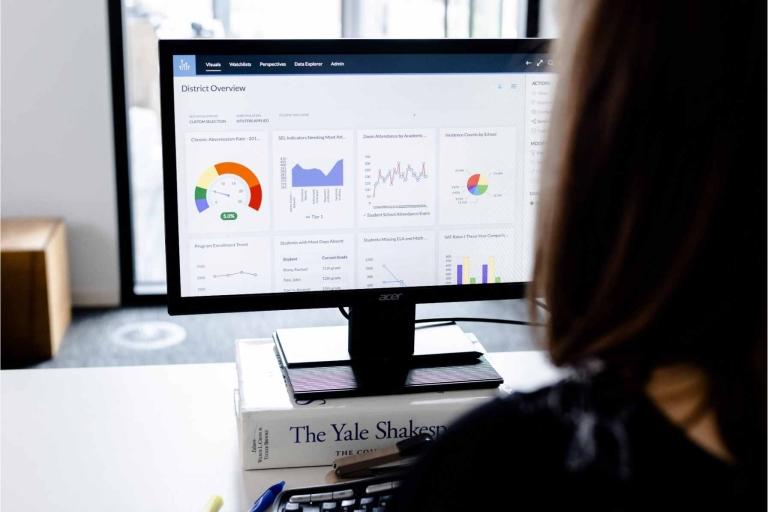People in education often ask me the reasons why our school district chose Canvas as its learning management system (LMS). So much went into that choice and I can relate to some of their apprehension-fear even-that comes with an exciting, yet daunting, task.
I work for the Huntington Beach Union High School District, a public school district in Orange County, California with 16,000 students in 11 campuses including high schools, magnet schools and alternative education. We had used an in-house system that enabled teachers to post assignments and grades, but this was a “read-only” environment that did not allow for students to submit assignments or get any kind of individualized feedback. We needed to change to a different platform that could facilitate a two-way flow of communication and help us integrate with the ever-growing array of modern online tools to keep with the demands of our users.
During the evaluation, the finalists included a system that neighboring school districts used and had said positive things about. That would have been the safe choice. But when we took a deeper look at all of the systems, Canvas was the most forward-thinking and its features matched with what we valued most and provided the most benefit, including:
- Open sourced yet secure integration and design architecture-open APIs, IMS Global Standards (LTI, QTI), Google Apps/Drive and SSO
- Feedback Tools-audio, video, annotated markup, rubric, text and peer reviews
- Fewer clicks to get it done and proof of time saved
Three years later, we have no regrets choosing Canvas. In fact, we appreciate how Canvas shares its roadmap and future development plans.
In our district no one is required to use Canvas, but it is available to all. Our Spring 2017 statistics show that 81% of teachers and 93% of students use Canvas – much higher engagement numbers than what I hear from surrounding districts who use something else.
I think the biggest factor for this is that our teachers were the ones who drove the Canvas selection, then the training and rollout. They were the ones who wanted Canvas based on their use of it in the Free for Teachers accounts. For us this made all the difference, so I'd always recommend you empower your teacher leaders to test the waters and define the process. Teacher and student feedback should be most important.
We also feel that our district has found new solutions that have been made possible by using Canvas. Tech-wise, exchanging data between information systems and proprietary SIS databases can be problematic. Thanks to the Canvas API this problem is no longer a roadblock for us. Using the APIs we were able to integrate real-time data in our district-wide portal so teachers can monitor student performance across all their classes and easily transfer grades from Canvas to our SIS. Over the years it has also been validating to learn than using Canvas in high school has helped many of our students get off to a good start because many of their colleges and universities also use Canvas.
Members of the Huntington Beach Union High School District have also shared their experience through immersing ourselves in the Canvas Community, hosting webinars, hosting Canvas open houses, and presenting at Canvas’ annual user conference InstructureCon. I’ve spoken about using Canvas as part of our initiative to personalize learning for students and allowing them to take ownership of their education. Technology should assist in those goals, not stand as a barrier.
You’ve now read a snapshot of my experience and how Canvas has helped Huntington. Making the change is worth it. Focus on the tools that can increase engagement, promote innovations, and make teaching and learning easier at your institution or school district.
My very best on your LMS quest!
Keep Learning,
Chris Long
Education Technology Coordinator, Huntington Beach Union High School District
Related Content
 inst-3step.jpg
inst-3step.jpgBlogs
 13lmsfeaturesthatbenefitstudentlearning.jpg
13lmsfeaturesthatbenefitstudentlearning.jpgBlogs
 community-homepage.jpg
community-homepage.jpgBlogs
